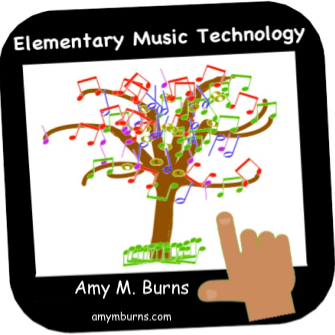#techtiptuesday Michael Markowski's Music Lab
Recently, a music educator on the Middle School Band's FB Page shared this great website created by Michael Markowski. This music lab is a gold mine for music educators seeking innovative ways to teach or reinforce music theory and ear training. With engaging tools like chordal slot machines, interval recognition games, and jazz harmony identification, it transforms abstract concepts into fun, hands-on learning experiences. These activities are perfect for supplementing classroom instruction or encouraging students to explore music independently. To discover how this resource can enrich your teaching toolkit, check out the video, read the post below, and explore the site for yourself at https://www.michaelmarkowski.com/lab/
Music Lab
Slots of Note! (chordal slot machine): Begin with 500 tokens and the payout rules are:
Major chords: 100 tokens. Minor chords: 50 tokens.
Augmented and diminished chords: 25 tokens.
Ear Doctor (Intonation): Click 'Listen' to play two pitches.
Decide whether they are in tune, sharp, or flat.
Simon SIngs! (Dictation: Much like the game Simon Says:
Play the note or notes you hear.
It will add a note each time you get the pattern correct.
You play until you make a mistake.
Crazy Pitches (Intervals): Click 'Play Pitches' to hear two pitches.
These pitches may be more than an octave apart
Guess the fundamental interval between them.
Major Six (Guess the first six notes): Guess the first six notes to a famous melody:
This is much like Wordle.
Green notes are in the correct place.
Yellow notes are in the melody but need to be in a different spot.
The Drone Zone! (drone player): You've entered the Drone Zone! Adjust yourself accordingly.
Play P5 intervals together in sine, triangle, square, and sawtooth waveforms.
Razzle-Jazzle! (jazz harmony: Identify the jazz harmony by ear.
Levels: Random, Easy, Medium, Hard
Chord Quality: Major, Minor, Diminished, Augmented
Chord Extensions: b5, #5, 6, 6/9, 7, 9, b9, #9, 11, #11, 13
Choose a level, click play, listen to the chord, press the buttons to identify it, and click submit.
Hear Ye! Hear Ye! (identify the piece): Identify the piece in the 1-second clip.
Click the play button and listen to the excerpt.
There are four choices.
If you get it wrong, you can guess until you get it correct.
When you are correct, you can click on the button that brings you to a new page with more information about the piece.
Who Done It? (connect the pieces): Match four pieces by the same (concert band) composer.
You have four chances to match the four pieces with the same composer.
If you have played the pieces before, it helps with this game.
QWERTY Keys (modal piano): Play a modal keyboard in various modes.
Blues, Octatonic, Ionian, Dorian, Phrygian, Lydian, Mixolydian, Aeolian, Locrian, Harmonic Minor, Melodic Minor, and Whole Tone

